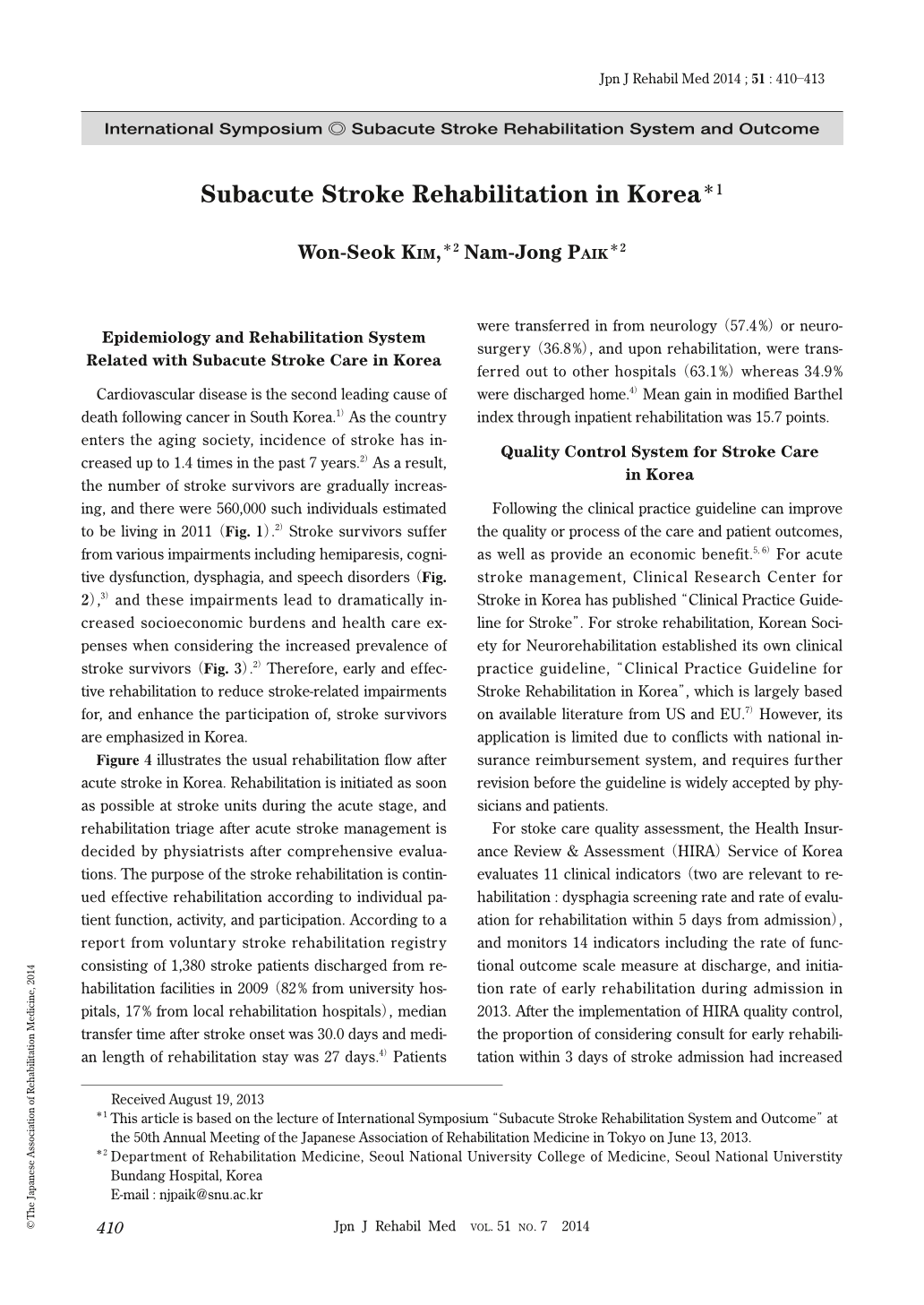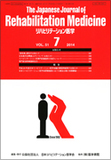Japanese
English
- 販売していません
- Abstract 文献概要
- 1ページ目 Look Inside
- 参考文献 Reference
Epidemiology and Rehabilitation System Related with Subacute Stroke Care in Korea
Cardiovascular disease is the second leading cause of death following cancer in South Korea.1) As the country enters the aging society, incidence of stroke has increased up to 1.4 times in the past 7 years.2) As a result, the number of stroke survivors are gradually increasing, and there were 560,000 such individuals estimated to be living in 2011 (Fig. 1.2) Stroke survivors suffer from various impairments including hemiparesis, cognitive dysfunction, dysphagia, and speech disorders (Fig. 2),3) and these impairments lead to dramatically increased socioeconomic burdens and health care expenses when considering the increased prevalence of stroke survivors (Fig. 3).2) Therefore, early and effective rehabilitation to reduce stroke-related impairments for, and enhance the participation of, stroke survivors are emphasized in Korea.
Figure 4 illustrates the usual rehabilitation flow after acute stroke in Korea. Rehabilitation is initiated as soon as possible at stroke units during the acute stage, and rehabilitation triage after acute stroke management is decided by physiatrists after comprehensive evaluations. The purpose of the stroke rehabilitation is continued effective rehabilitation according to individual patient function, activity, and participation. According to a report from voluntary stroke rehabilitation registry consisting of 1,380 stroke patients discharged from rehabilitation facilities in 2009 (82% from university hospitals, 17% from local rehabilitation hospitals), median transfer time after stroke onset was 30.0 days and median length of rehabilitation stay was 27 days.4) Patients were transferred in from neurology (57.4%) or neurosurgery (36.8%), and upon rehabilitation, were transferred out to other hospitals (63.1%) whereas 34.9% were discharged home.4) Mean gain in modified Barthel index through inpatient rehabilitation was 15.7 points.
Epidemiology and Rehabilitation System Related with Subacute Stroke Care in Korea
Cardiovascular disease is the second leading cause of death following cancer in South Korea.1) As the country enters the aging society, incidence of stroke has increased up to 1.4 times in the past 7 years.2) As a result, the number of stroke survivors are gradually increasing, and there were 560,000 such individuals estimated to be living in 2011 (Fig. 1.2) Stroke survivors suffer from various impairments including hemiparesis, cognitive dysfunction, dysphagia, and speech disorders (Fig. 2),3) and these impairments lead to dramatically increased socioeconomic burdens and health care expenses when considering the increased prevalence of stroke survivors (Fig. 3).2) Therefore, early and effective rehabilitation to reduce stroke-related impairments for, and enhance the participation of, stroke survivors are emphasized in Korea.
Figure 4 illustrates the usual rehabilitation flow after acute stroke in Korea. Rehabilitation is initiated as soon as possible at stroke units during the acute stage, and rehabilitation triage after acute stroke management is decided by physiatrists after comprehensive evaluations. The purpose of the stroke rehabilitation is continued effective rehabilitation according to individual patient function, activity, and participation. According to a report from voluntary stroke rehabilitation registry consisting of 1,380 stroke patients discharged from rehabilitation facilities in 2009 (82% from university hospitals, 17% from local rehabilitation hospitals), median transfer time after stroke onset was 30.0 days and median length of rehabilitation stay was 27 days.4) Patients were transferred in from neurology (57.4%) or neurosurgery (36.8%), and upon rehabilitation, were transferred out to other hospitals (63.1%) whereas 34.9% were discharged home.4) Mean gain in modified Barthel index through inpatient rehabilitation was 15.7 points.

Copyright © 2014, The Japanese Association of Rehabilitation Medicine. All rights reserved.


